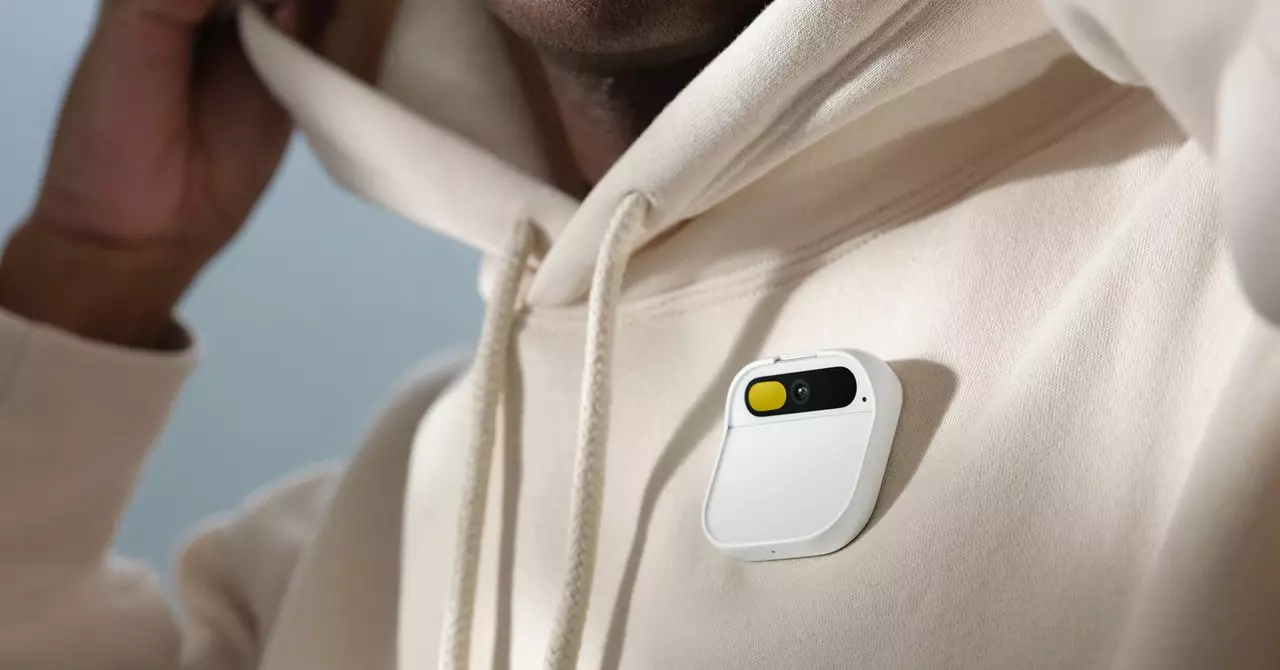The Humane Ai Pin made quite a splash upon its debut, but soon after its launch in April 2024, it spiraled into a narrative of disappointment, culminating in its abrupt service shutdown about a year later. Priced at $700, the device aimed to redefine the personal tech landscape with promises of sophisticated features—such as holographic displays and AI functionalities—that simply did not deliver. Users quickly turned from enthusiastic adopters to frustrated detractors as they faced constant connectivity failures and underwhelming performance. This article will explore the rise and fall of the Humane Ai Pin, the reactions of its user community, and the unexpected resurgence that followed its apparent demise.
Promises Unfulfilled: The Expectations Surrounding the Ai Pin
When the Humane Ai Pin hit the market, it was heralded as the next breakthrough in wearable technology, offering a mix of functions traditionally relegated to smartphones but in a compact, aesthetically pleasing form. Consumers anticipated being able to make calls, take photos, and receive notifications on a stylish gadget that could be retained on their person with ease. However, from its very introduction, user feedback highlighted a significant disconnect between the device’s promised capabilities and its actual performance. Problems ranged from software glitches to hardware issues that rendered the device nearly unusable for many.
During its brief life, the Ai Pin not only failed to capture the market’s imagination but also sparked significant ridicule across various tech platforms. As returns outpaced sales, Humane’s plans to secure a loyal customer base effectively crumbled. The final nail in the coffin came when the company announced it would discontinue servicing the device and divest key components to HP. Users were left feeling betrayed, with little recourse aside from limited refunds.
As the news of the Ai Pin’s shutdown broke, reactions from its user community mirrored the stages of grief. Many users expressed their raw disappointment in forums and social media discussions, with many vocalizing their anger and sorrow at the loss of a product that they felt could have been transformative. Amidst this chaos, one user, known as @23box_, took the initiative to create a new Discord server named ‘reHumane,’ designed for those who still had a passion for the device and wanted to explore DIY solutions.
This new community became a sanctuary for users to unite, share insights, and derive joy from the remnants of their beloved device. The hacking subculture surrounding the Ai Pin emerged as participants began to dissect the technology, seeking to repurpose it in creative ways. This solidarity among users showcased the resilience of a community determined to challenge the limitations that the company placed on their investments.
Interestingly, while the Humane Ai Pin’s life was short-lived, the aftermath has opened the door for a renewed interest in innovative tech. Hackers starting to probe into the device’s software and hardware functionality have also encouraged a spirit of rebellion against corporate control over technology. By seeking to unlock the potential of the Ai Pin, enthusiasts are not only preserving the device’s legacy but also hinting at initiatives that prioritize user autonomy and open-source principles in tech design.
As this group of innovators progresses, it draws parallels with past movements in technology. History is replete with examples where initial failures have sparked renewed interest and passion, ultimately leading to groundbreaking advancements. The story of the Ai Pin serves as a reminder that innovation is often born from the ashes of failure, encouraging a rethink of how we engage with technology and its providers.
The Humane Ai Pin may have faced its demise just under a year after its introduction, but it ignited a transformative conversation about the relationship between users and technology. The resulting community of enthusiasts exemplifies the power of collective resilience, inspiring a new wave of creativity that looks to push the boundaries of what personal tech can achieve. While Humane and HP may have turned their backs on the Ai Pin, the spirit of innovation—driven by imagination and collaboration—remains very much alive among those willing to rise from the ashes of disappointment. In a world where technology is often dictated by corporate giants, it is this kind of grassroots ingenuity that has the potential to reshape the future.

